Abstract
Contents
List of Figures
List of Tables
List of Algorithms
List of Symbols and Notations
Introduction
Why ``3D'' Semantic Perception?
Computational Problems
Publications
Thesis Outline and Contributions
Semantic 3D Object Mapping Kernel
3D Map Representations
Data Acquisition
Data Representation
Summary
Mapping System Architectures
3D Point Feature Representations
The ``Neighborhood'' Concept
Filtering Outliers
Surface Normals and Curvature Estimates
Point Feature Histograms (PFH)
Fast Point Feature Histograms (FPFH)
Feature Persistence
Related Work
Summary
From Partial to Complete Models
Point Cloud Registration
Data Resampling
Related Work
Summary
Clustering and Segmentation
Fitting Simplified Geometric Models
Basic Clustering Techniques
Finding Edges in 3D Data
Segmentation via Region Growing
Application Specific Model Fitting
Summary
Mapping of Indoor Environments
Static Scene Interpretation
Heuristic Rule-based Functional Reasoning
Learning the Scene Structure
Exporting and Using the Models
Summary
Surface and Object Class Learning
Learning Local Surface Classes
Generating Training Data
Most Discriminative Feature Selection
Supervised Class Learning using Support Vector Machines
Fast Geometric Point Labeling
Global Fast Point Feature Histograms for Object Classification
Summary
Parametric Shape Model Fitting
Object Segmentation
Hybrid Shape-Surface Object Models
Summary
Applications
Table Cleaning in Dynamic Environments
Real-time Collision Maps for Motion Re-Planning
Semantic Interpretation of 3D Point Cloud Maps
System Evaluation
Summary
Identifying and Opening Doors
Detecting Doors
Detecting Handles
System Evaluation
Summary
Real-time Semantic Maps from Stereo
Leaving Flatland Mapping Architecture
Visual Odometer
Spatial Decomposition
Polygonal Modeling
Merging and Refinement
Semantic Labeling
3D Mapping Performance
Semantic Map Usage and Applications
Hybrid Model Visualizations
Motion Planning for Navigation
Summary
Conclusion
3D Geometry Primer
Euclidean Geometry and Coordinate Systems
Distance Metrics
Geometric Shapes
Sample Consensus
Machine Learning
Support Vector Machines
Conditional Random Fields
Bibliography
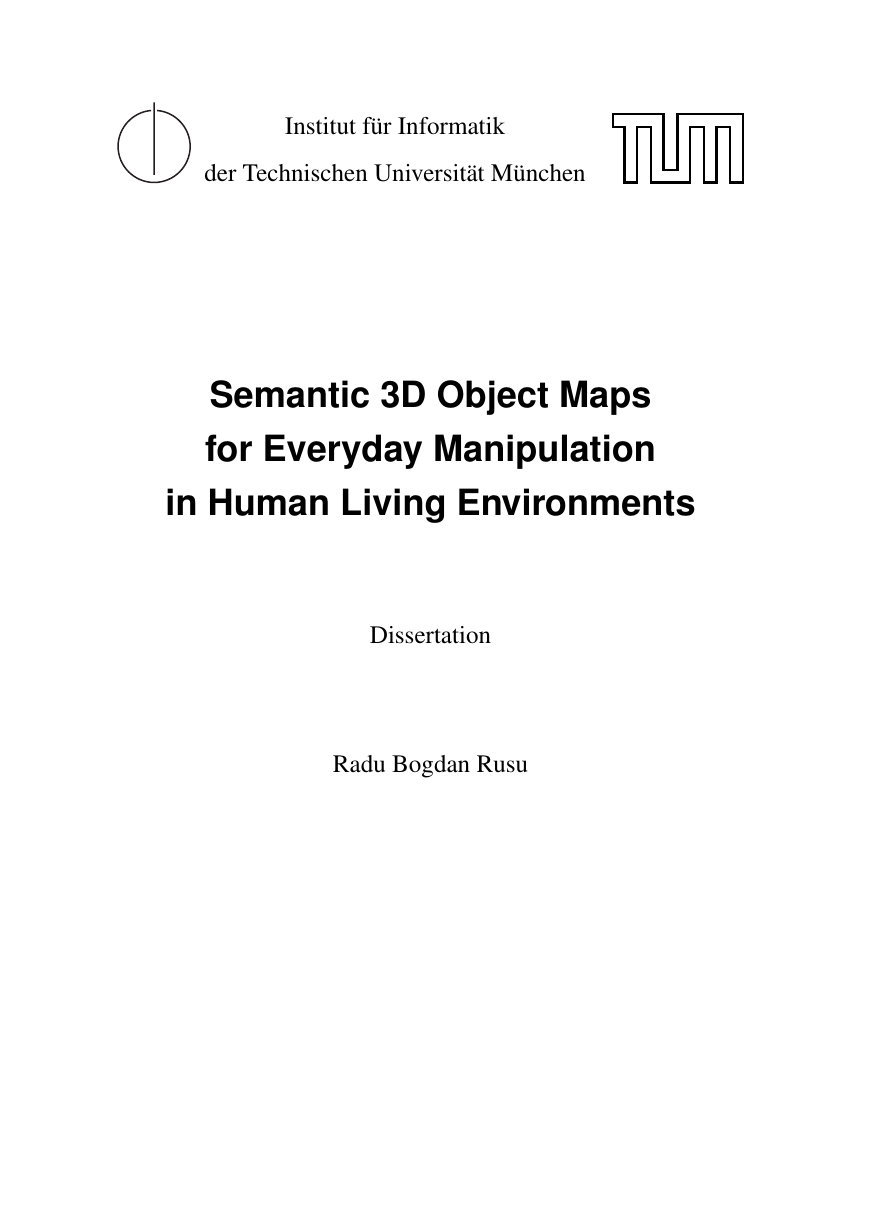

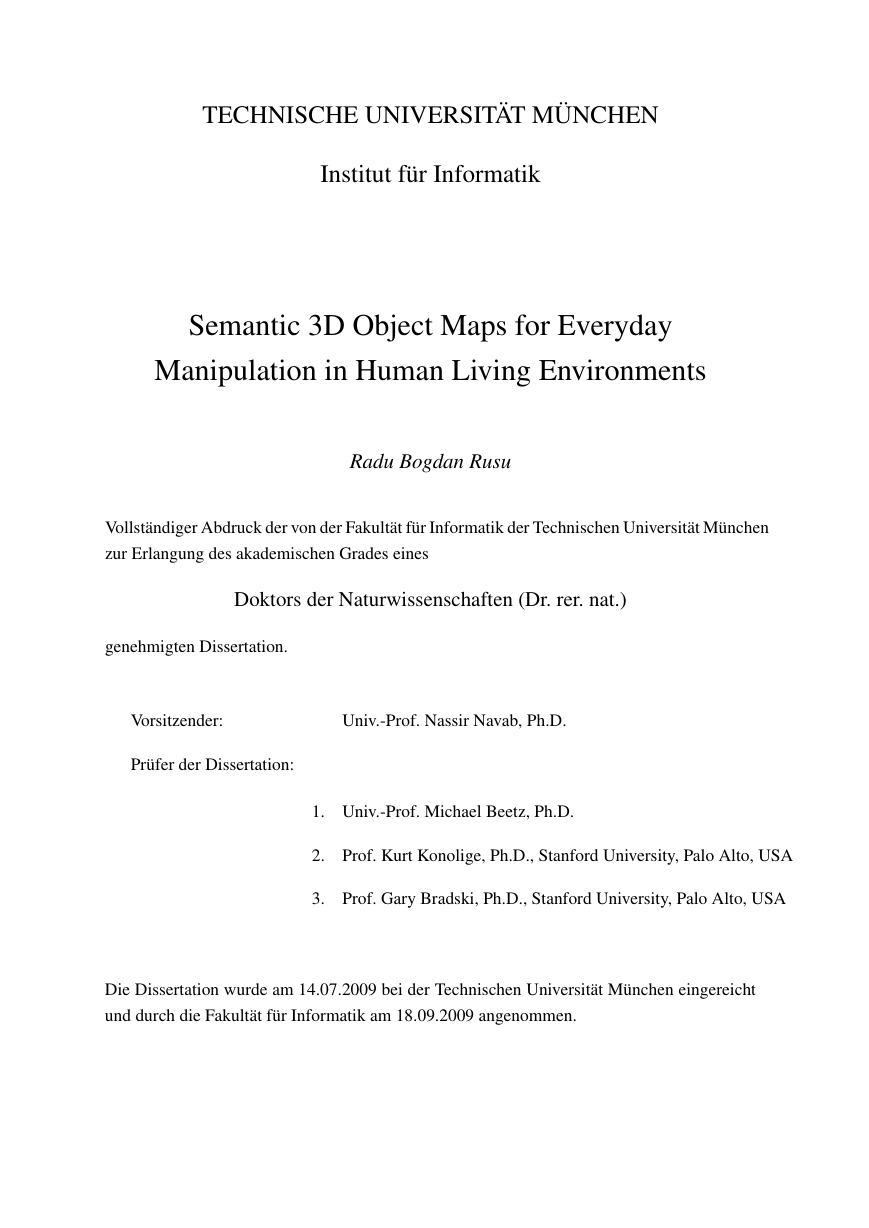

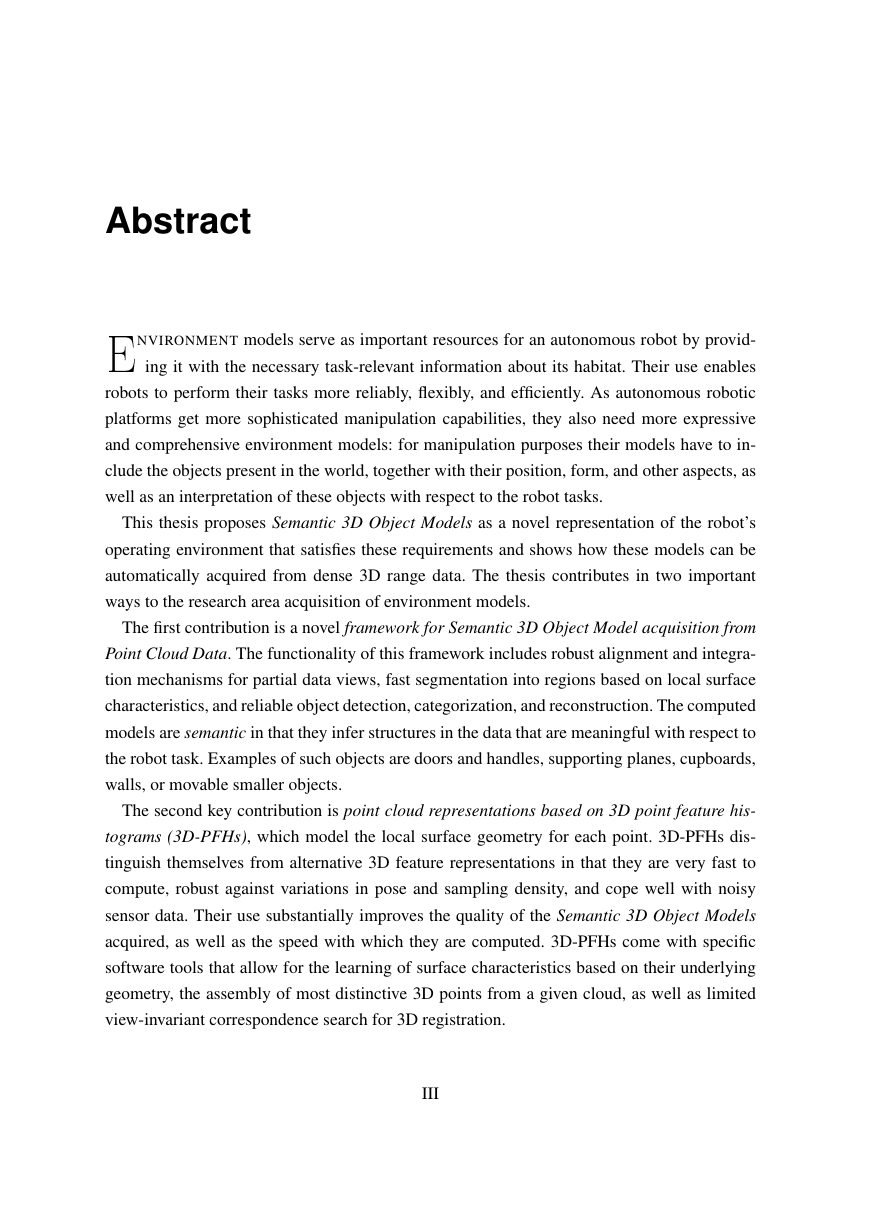
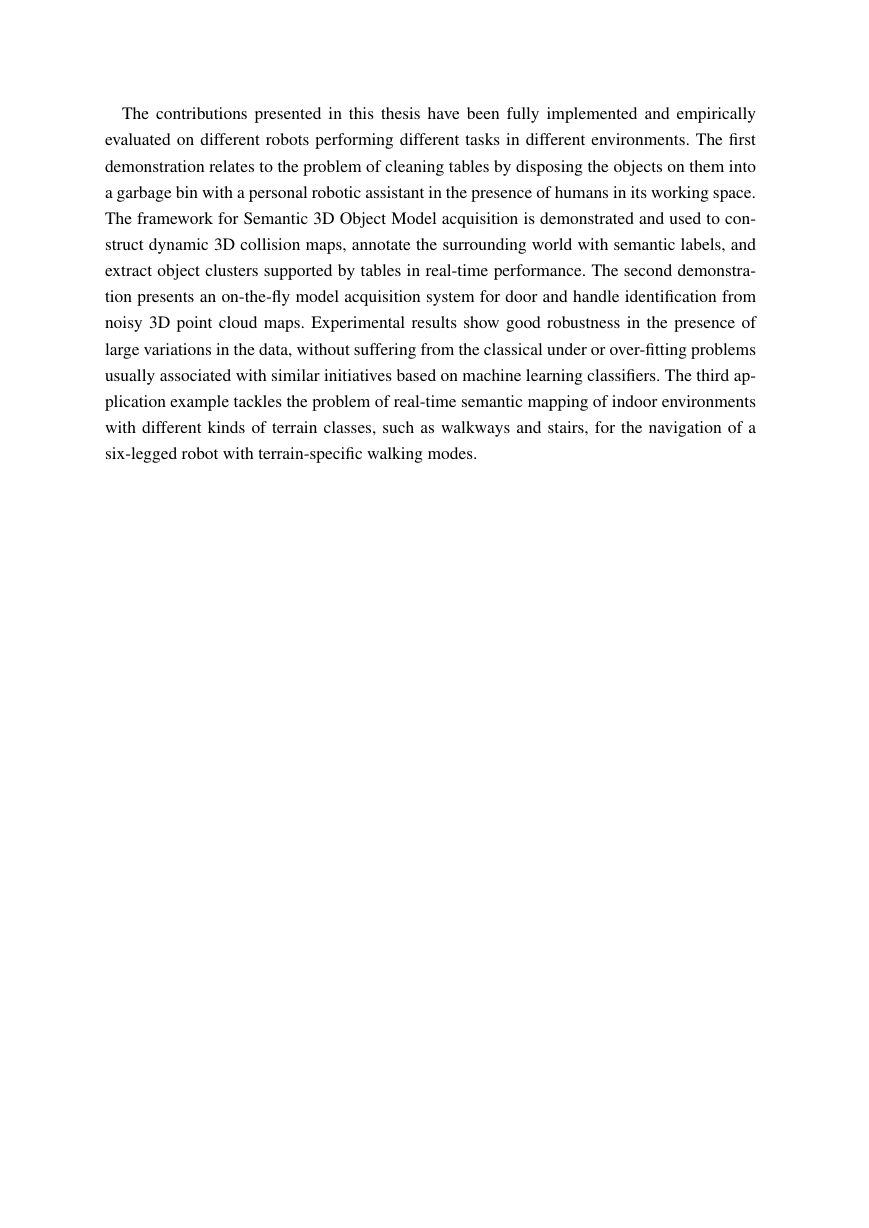
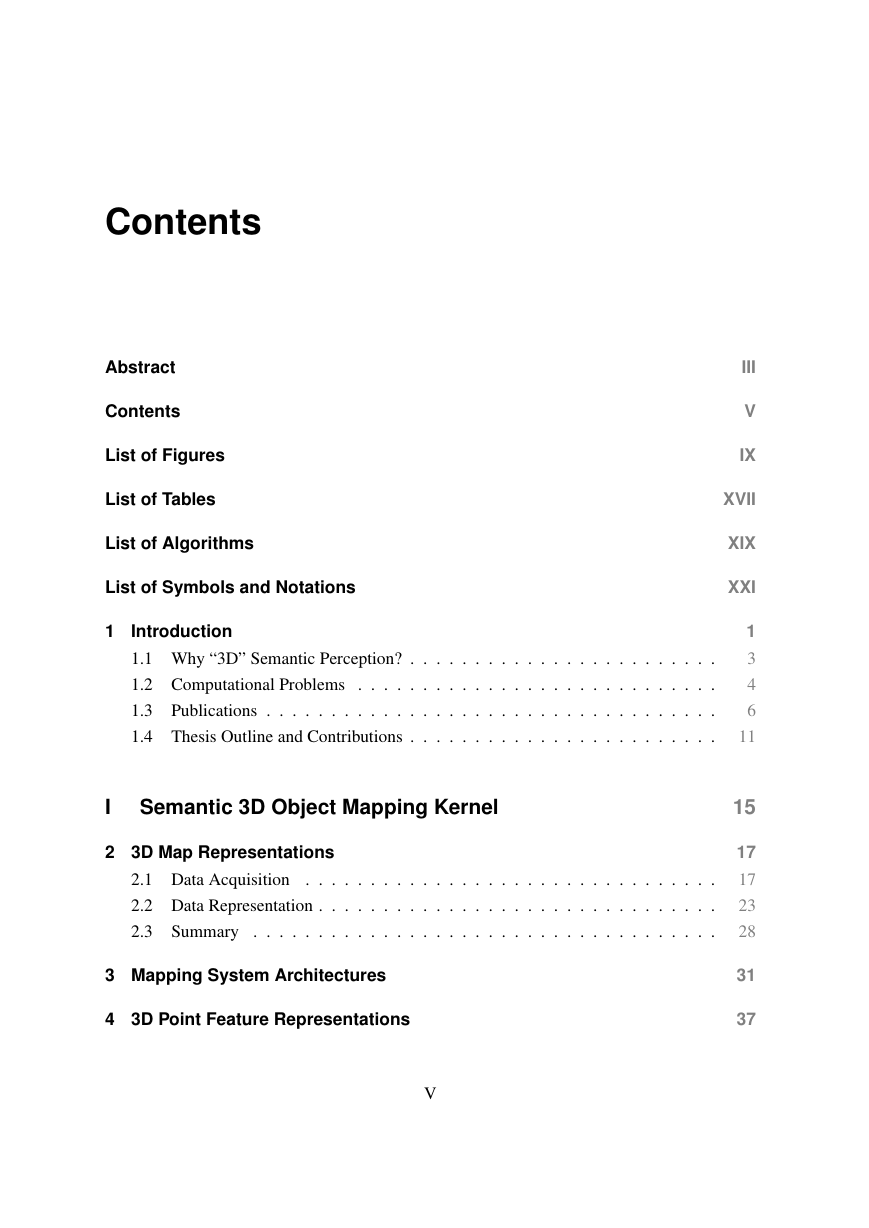









 2023年江西萍乡中考道德与法治真题及答案.doc
2023年江西萍乡中考道德与法治真题及答案.doc 2012年重庆南川中考生物真题及答案.doc
2012年重庆南川中考生物真题及答案.doc 2013年江西师范大学地理学综合及文艺理论基础考研真题.doc
2013年江西师范大学地理学综合及文艺理论基础考研真题.doc 2020年四川甘孜小升初语文真题及答案I卷.doc
2020年四川甘孜小升初语文真题及答案I卷.doc 2020年注册岩土工程师专业基础考试真题及答案.doc
2020年注册岩土工程师专业基础考试真题及答案.doc 2023-2024学年福建省厦门市九年级上学期数学月考试题及答案.doc
2023-2024学年福建省厦门市九年级上学期数学月考试题及答案.doc 2021-2022学年辽宁省沈阳市大东区九年级上学期语文期末试题及答案.doc
2021-2022学年辽宁省沈阳市大东区九年级上学期语文期末试题及答案.doc 2022-2023学年北京东城区初三第一学期物理期末试卷及答案.doc
2022-2023学年北京东城区初三第一学期物理期末试卷及答案.doc 2018上半年江西教师资格初中地理学科知识与教学能力真题及答案.doc
2018上半年江西教师资格初中地理学科知识与教学能力真题及答案.doc 2012年河北国家公务员申论考试真题及答案-省级.doc
2012年河北国家公务员申论考试真题及答案-省级.doc 2020-2021学年江苏省扬州市江都区邵樊片九年级上学期数学第一次质量检测试题及答案.doc
2020-2021学年江苏省扬州市江都区邵樊片九年级上学期数学第一次质量检测试题及答案.doc 2022下半年黑龙江教师资格证中学综合素质真题及答案.doc
2022下半年黑龙江教师资格证中学综合素质真题及答案.doc